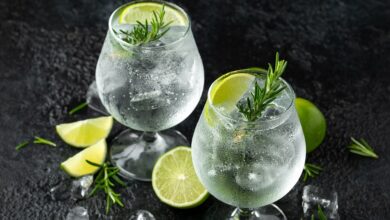alcoholic fermentation

Fermentation is the process that converts the must or grape juice into wine. It is a natural mechanism, which allows the yeasts present in the fruit to convert the natural sugars present in the fruit into alcohol. In this article, we will explain step by step how this process works.
Human beings have used alcoholic fermentation since ancient times and thanks to this process beer, cider or wine have been produced. This way of making alcoholic beverages is so old that it is already described in some passages in the Bible. However, it has been thanks to advances in technology and science that this type of fermentation has been improved to obtain some of the best wines in the world, such as Ribera del Duero wine (check out some purchase options at this link)..
The alcoholic fermentation of wine is a biological process that transforms the sugar present in the grapes into alcohol. In order for this transformation to begin, the complete absence of oxygen is required, because only then will the microorganisms responsible for this activity become active and begin to process carbohydrates, usually in the form of vegetable sugars such as fructose or sucrose, to obtain as final product ethanol, a form of natural alcohol.
During the fermentation process, yeasts also produce a series of elements as waste. In this sense, carbon dioxide is produced that some wineries take advantage of for the production of carbonated wines or cavas. At the same time, inside the vats, the fermentation of the wine produces other gases that are released so that they do not affect the taste or quality of the wine.

How is alcohol made?
This type of alcoholic fermentation is based on the ability of yeasts to consume carbohydrates and convert them into ethanol. Thus, these microscopic organisms, being in the total absence of oxygen, activate a natural process in order to create anaerobic energy. To do this, they dissociate glucose molecules to obtain the energy necessary to survive, creating CO2 and alcohol as waste.
Among the different types of fermentation, the alcoholic is known as “anaerobic fermentation”, since the yeasts require that the vat or the container in which the grapes are fermented be completely empty of oxygen, otherwise the effect will not occur. yeast activation.
This process, until the mid-1980s, was produced only with natural yeasts, that is, they were “instantaneous fermentations”. This type of fermentation offered the wine some personal characteristics depending on the variety, the region and even the winery, but it also caused certain mishaps, since some years, due to sudden variations in temperature or other problems, the yeasts did not activated or the process stopped, leaving the sweet wines.
In 1983, Active Dry Yeast appeared, which can be added to the must in the vat, activating the fermentation process or reinforcing it if the natural yeasts present in the skin have not been activated correctly or if the process has stopped.
What are yeasts?
Yeasts are microscopic fungi found naturally on grape skins. The grapes have a layer of white “dust” that covers their skin, called Pruina, which is made up of these microscopic organisms, which are activated when the grape is broken and left to rest in a container without oxygen.
Although humans have used this type of fermentation since ancient times, the creator of the modern method of alcoholic fermentation was Louis Pasteur, a French scientist and doctor, who discovered at the end of the 19th century that this process was actually due to the action of these small living organisms. Later, in 1891, Hansen was able to isolate the yeasts in a laboratory and, in the mid-1930s, they began to be studied at the genetic level, to improve the strains that have been used in wine production.
In this sense, thanks to the genetic study and the selection by scientists of the best strains with which to work on alcohol metabolism, some capable of producing excellent wines have been isolated. In this sense, for the production of wine, beer and bread, the use of yeasts from the Saccharomyces cerevisiae family is common.
However, most wineries work with their own yeasts, selected over the centuries and adapted to their production needs. For example, some wineries need yeasts resistant to high alcohol content, while others need yeasts capable of fermenting at low temperatures so that the process does not stop when winter arrives. There are also some capable of masking the vegetable aromas of underripe grapes or of providing greater volume to red wine.

What do yeasts contribute to wine?
The main metabolism of the yeast converts the sugar into wine, however, the secondary one is what gives the broth its main organoleptic properties. That is, its aromas and flavors. The yeasts are what convert the natural aromas of the grape, into a whole range of smells that are what we will find in the wine. These olfactory notes, although present in the grape, are very weak. This second metabolism reinforces them, giving rise to winemakers discovering fruity, citrus and herbal touches.
In this sense, manufacturers are very careful when choosing their yeasts, since depending on their fermentation capabilities, they will create a variety of different flavors and smells.
Finally, when this wine passes from the vats to the barrels, it will be when it takes on all its final colours, aromas and flavours. These barrels can be new or old, for which barrels from previous years are reused, repairing them when necessary with tools such as the Makita LB1200F, so that the resulting wine at the end of aging is of the highest possible quality.



